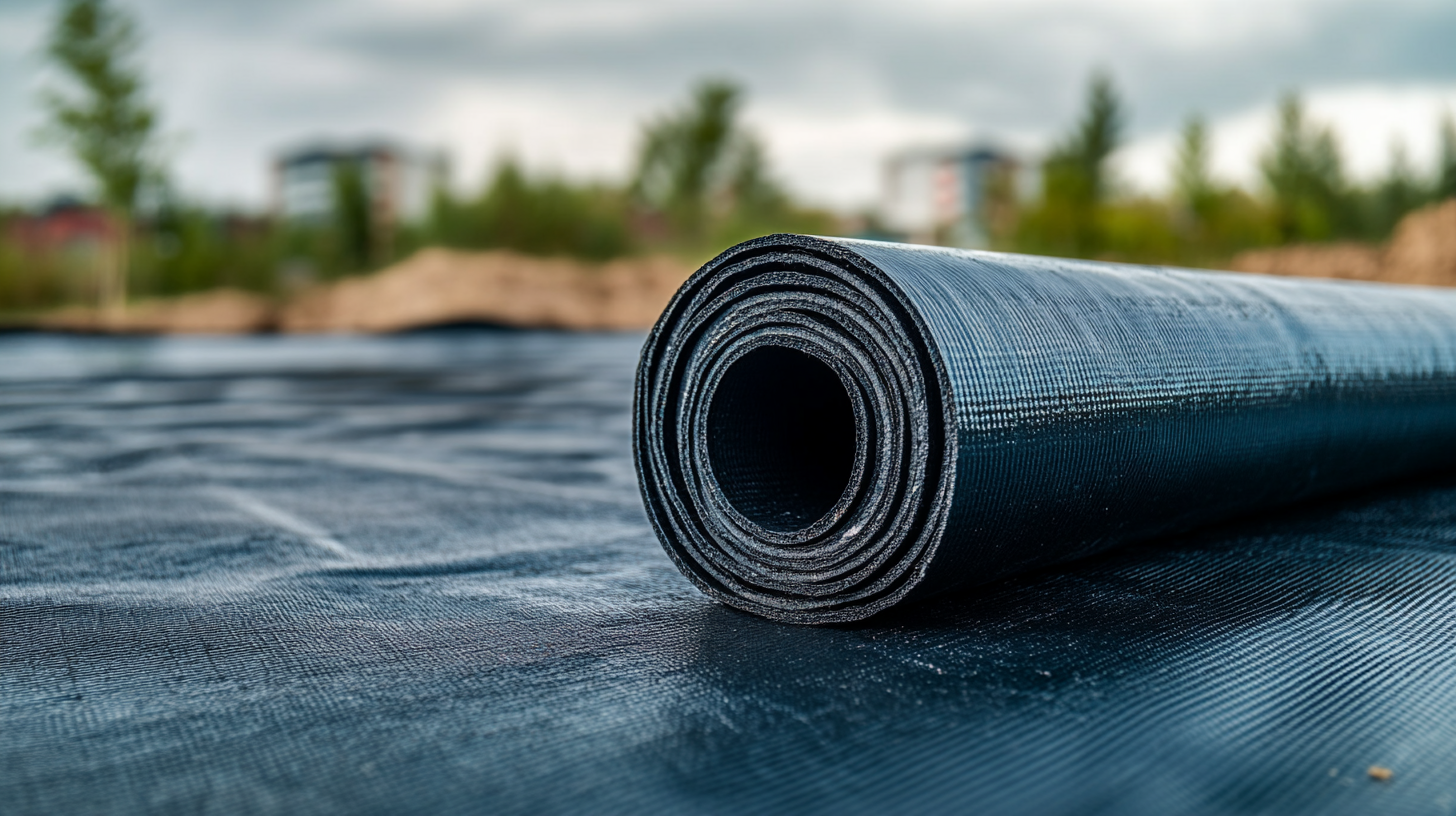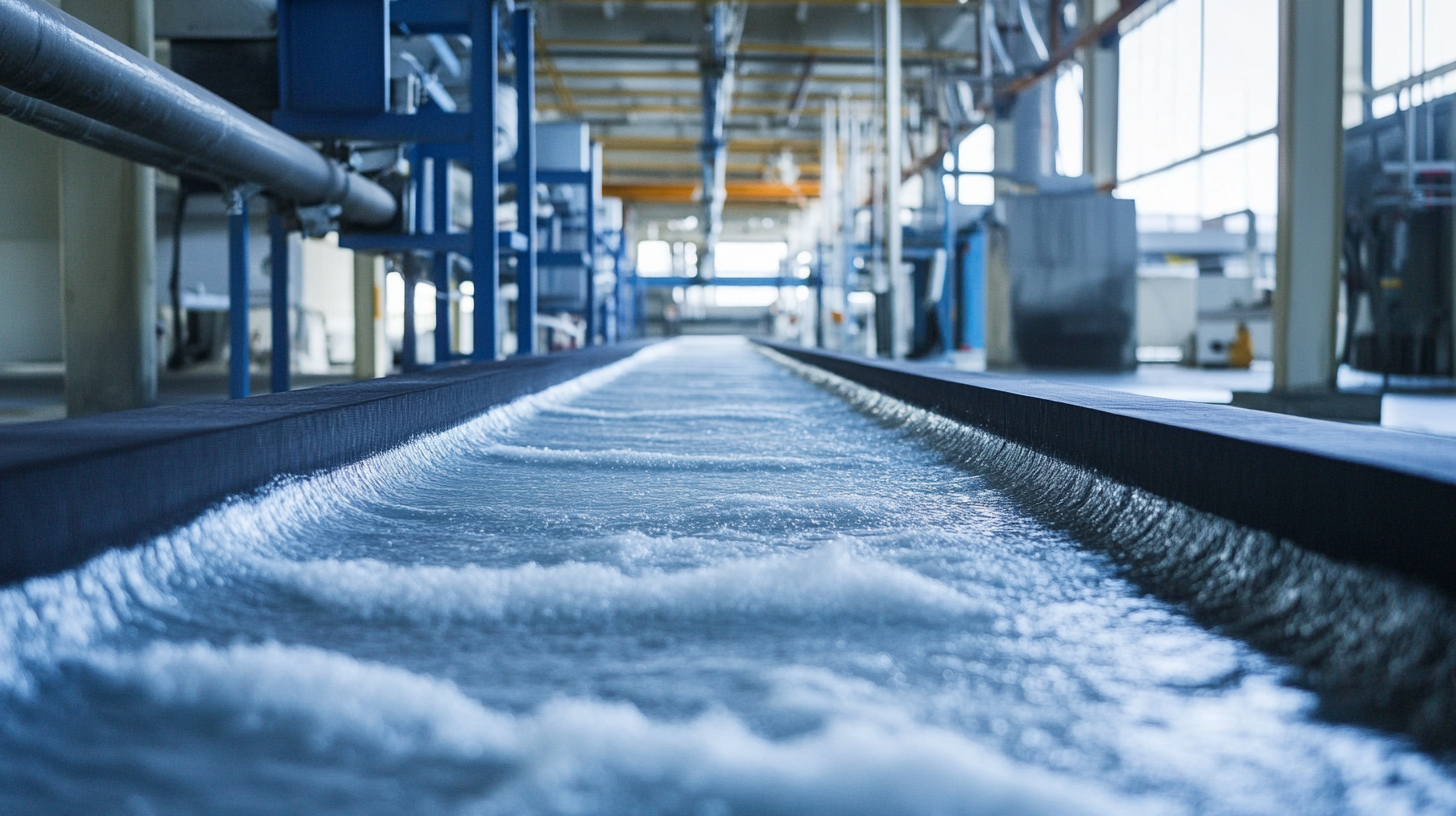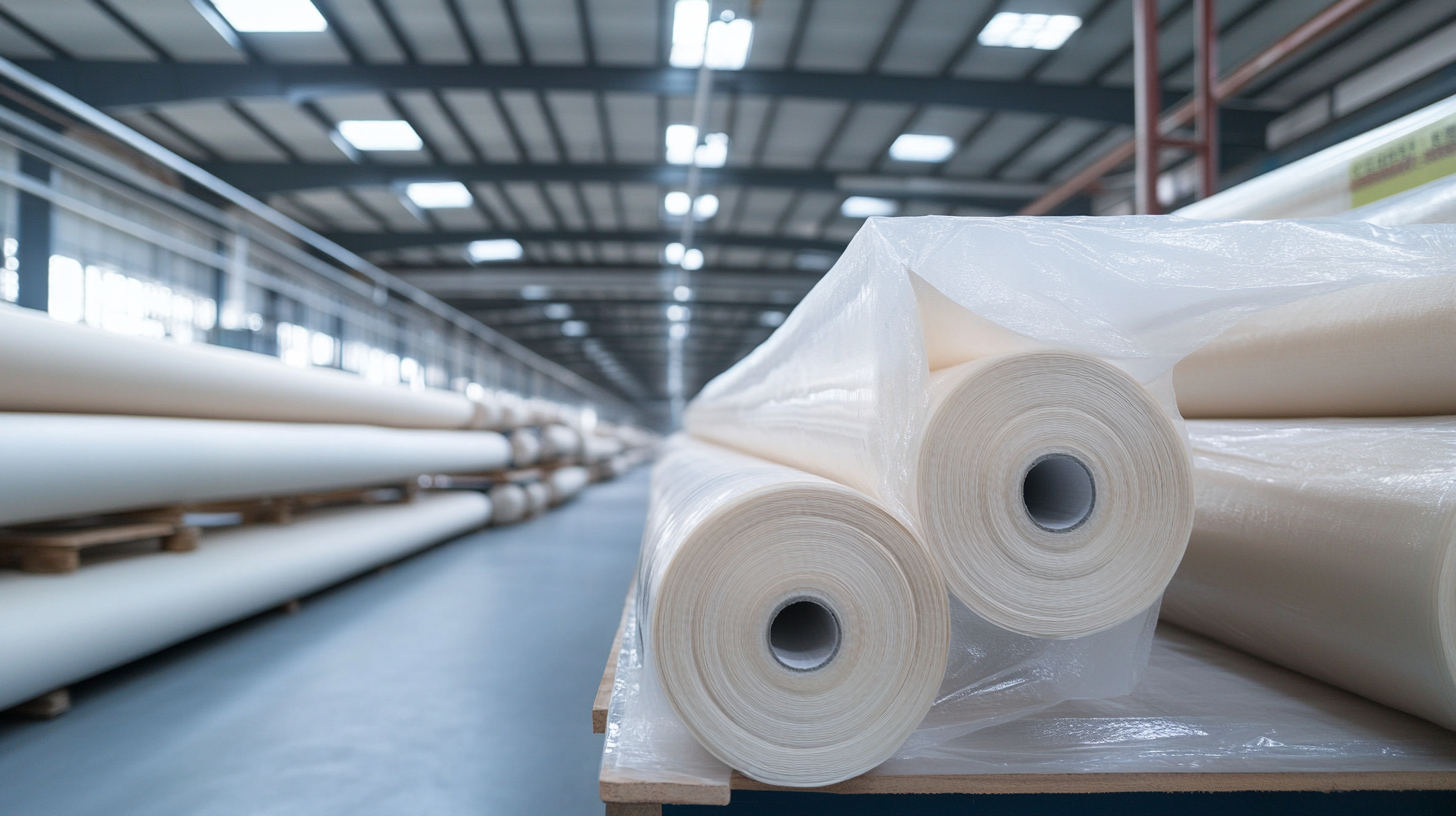Inquiry
Form loading...
- Phone
- E-mail
In the ever-evolving landscape of construction and civil engineering, the use of Geotextile Membrane Non Woven materials has gained significant traction. These innovative products serve a crucial role in soil stabilization, erosion control, and drainage management, enhancing the durability and longevity of infrastructure projects. As the demand for high-quality geotextiles continues to rise, identifying the top manufacturers who specialize in Geotextile Membrane Non Woven products becomes imperative for contractors, engineers, and developers looking to ensure the success of their projects.
This blog aims to explore the top seven manufacturers of Geotextile Membrane Non Woven materials in the market today. By examining their technological advancements, product offerings, and industry reputation, we will provide valuable insights that can help stakeholders make informed decisions. Whether you are embarking on a large-scale construction project or seeking reliable geotextile solutions, understanding the key players in this sector will empower you to choose the best materials for optimal performance and sustainability.

Geotextile membranes play an essential role in modern construction and civil engineering projects. These specialized fabrics are designed to separate, filter, reinforce, protect, and drain soil and other materials. By incorporating geotextile membranes, engineers can maintain the integrity of soil structures and extend the lifespan of infrastructure developments. Their porous nature allows water to flow while preventing the movement of soil particles, making them ideal for applications in road construction, landfills, and erosion control.
The importance of geotextile membranes cannot be overstated. In various environments, they help to manage water flow and combat soil erosion, crucial in areas prone to heavy rainfall or flooding. Their use leads to more sustainable construction practices, as they reduce the need for drainage systems and minimize environmental impact. Furthermore, geotextile membranes are noted for their durability and resistance to biological degradation, making them a long-lasting solution for protecting natural resources and ensuring the stability of structures.
In today's competitive market, understanding the different types of geotextile membranes and their applications is vital for construction professionals. As such, identifying top manufacturers is crucial for sourcing high-quality materials that meet project specifications and performance requirements. The appropriate selection of geotextile membranes can enhance project outcomes and contribute to safer, more resilient infrastructure.
When evaluating the top manufacturers of geotextile membrane non-woven products in the market, it is crucial to establish a set of criteria that reflects both industry standards and specific product performance. Key factors include product quality, technological innovation, market presence, and customer service. According to recent industry reports, the global geotextiles market is expected to witness significant growth, with estimates projecting a CAGR of over 10% in the coming years. This rising demand underscores the necessity for manufacturers to maintain high operational standards and innovate their offerings continually.
Another important aspect to consider is the manufacturing processes employed by these companies. The latest insights into the nonwovens industry highlight advancements in contract manufacturing and converting processes, which include finishing, packaging, and slitting. These advancements not only enhance product quality but also improve efficiency and reduce production time, allowing manufacturers to meet the evolving needs of the construction and environmental sectors more effectively.
Additionally, assessing customer feedback and market reach is vital. Companies that prioritize robust customer support and continuously adapt to market trends tend to perform better in terms of both sales and sustainability. Reports indicate that manufacturers that implement customer-centric approaches and focus on environmentally friendly practices are gaining a competitive edge, reflecting the growing consumer preference for sustainable products in the geotextile sector.
| Rank | Manufacturer | Country | Product Quality | Market Share (%) | Customer Rating |
|---|---|---|---|---|---|
| 1 | GeoTextile Corp | USA | High | 25 | 4.8 |
| 2 | EcoFabrics Ltd | UK | Medium | 20 | 4.5 |
| 3 | PolyTex Solutions | Germany | High | 18 | 4.7 |
| 4 | GreenCover INC | Canada | Medium | 15 | 4.6 |
| 5 | GeoFabric Experts | Australia | High | 10 | 4.4 |
| 6 | FiberGuard Technologies | India | Medium | 8 | 4.3 |
| 7 | NaturaTex Group | Italy | Medium | 4 | 4.2 |
In today's rapidly evolving construction and civil engineering sectors, non-woven geotextile membranes have emerged as vital components for various applications, including soil stabilization, erosion control, and drainage systems. Understanding the key players in this market is essential for stakeholders looking to make informed decisions. Leading manufacturers are utilizing advanced technologies and innovative materials to meet the increasing demand for quality geotextiles.
One of the top manufacturers, **Propex Global**, has established itself as a frontrunner by focusing on sustainable practices and high-performance products. Their offerings are widely recognized for durability and effectiveness, making them a preferred choice in the industry. Another notable player, **Tencate Geosynthetics**, combines over a century of experience with cutting-edge research to develop versatile solutions tailored to diverse applications. From road construction to environmental remediation, their non-woven geotextiles are engineered for excellence.
In addition, **Huesker**, with its strong global presence, continues to innovate by integrating smart technology into their geotextile products. Their commitment to quality and performance has earned them a reliable reputation among contractors and engineers alike. Meanwhile, **GSE Environmental** stands out for its unique approach to geotextile manufacturing, focusing on customized solutions that cater to specific project requirements. Their expertise and product range demonstrate a strong dedication to meeting the unique challenges faced in various sectors.
The competition among these manufacturers drives continuous improvement and development in the geotextile membrane market, ensuring that customers receive not only effective but also sustainable solutions for their construction needs. As this sector grows, the profiles of these leading manufacturers will be crucial for understanding market dynamics and choosing the right materials for specific applications.

The growing demand for innovative geotextile membrane solutions is being propelled by advancements in manufacturing technologies. Companies like Mattex Geosynthetics are at the forefront of this revolution, as evidenced by their new vertically integrated geotextiles factory in Al Jubail, Saudi Arabia. This facility is expected to enhance production capabilities and improve the quality of nonwoven geotextiles, reflecting the increasing focus on efficiency and sustainability in manufacturing processes.
Moreover, the global chemicals market for membranes, projected to reach USD 4.4 billion, highlights the expanding opportunities within this sector. Various industries, including electric power, oil and gas, and food and beverage, are driving the demand for highly specialized membrane solutions, which underscores the versatility of geotextile membranes. As urbanization continues to trend upward, innovative approaches, such as new needling technologies, are becoming essential to meet the evolving needs of infrastructure and environmental projects.
Megatrends influencing the landscape include the ongoing economic fluctuations and the pressing need for sustainable construction materials. These factors are creating fertile ground for nonwoven geotextiles, as they offer solutions to complex engineering challenges, particularly in transportation and infrastructure development. The confluence of technology and market demand is setting the stage for a new era in geotextile membrane manufacturing, with significant implications for both manufacturers and end-users.

As the demand for sustainable solutions in various industries rises, the geotextile membrane sector is increasingly focusing on future trends that emphasize both innovation and environmental responsibility. One notable trend is the incorporation of biodegradable materials in the production of non-woven geotextile membranes. Manufacturers are exploring alternatives to traditional synthetic fibers, utilizing organic components that break down more quickly in natural environments, thereby reducing long-term waste.
Moreover, advancements in production technologies are leading to enhanced performance characteristics of geotextile membranes. Developments in polymer blending and recycling processes are allowing manufacturers to create products that not only meet stringent engineering requirements but also possess improved durability and functionality. These innovations align with the growing emphasis on sustainability, as they facilitate the use of recycled materials in new products, thereby minimizing the ecological footprint of geotextile membrane production.
Another trend is the integration of digital technologies into the manufacturing process. Automation and smart manufacturing practices are being adopted to increase efficiency and reduce waste throughout the production cycle. This shift not only boosts productivity but also enhances traceability and transparency in the supply chain. As consumers and industries alike demand more accountability for their environmental impact, manufacturers are leveraging these technologies to lead the way in sustainable practices. Overall, the future of geotextile membranes looks promising, driven by a commitment to sustainability and innovation.
